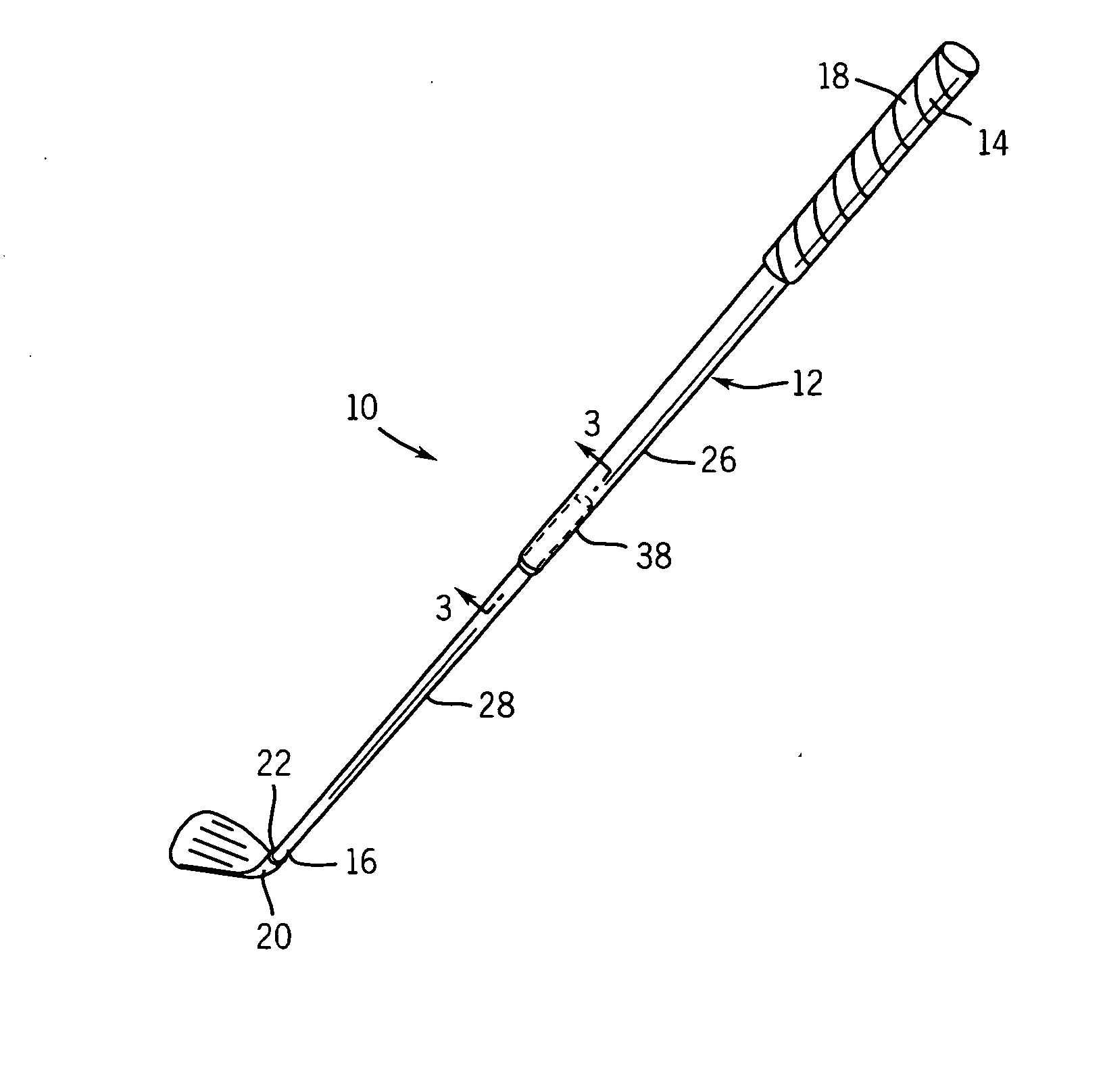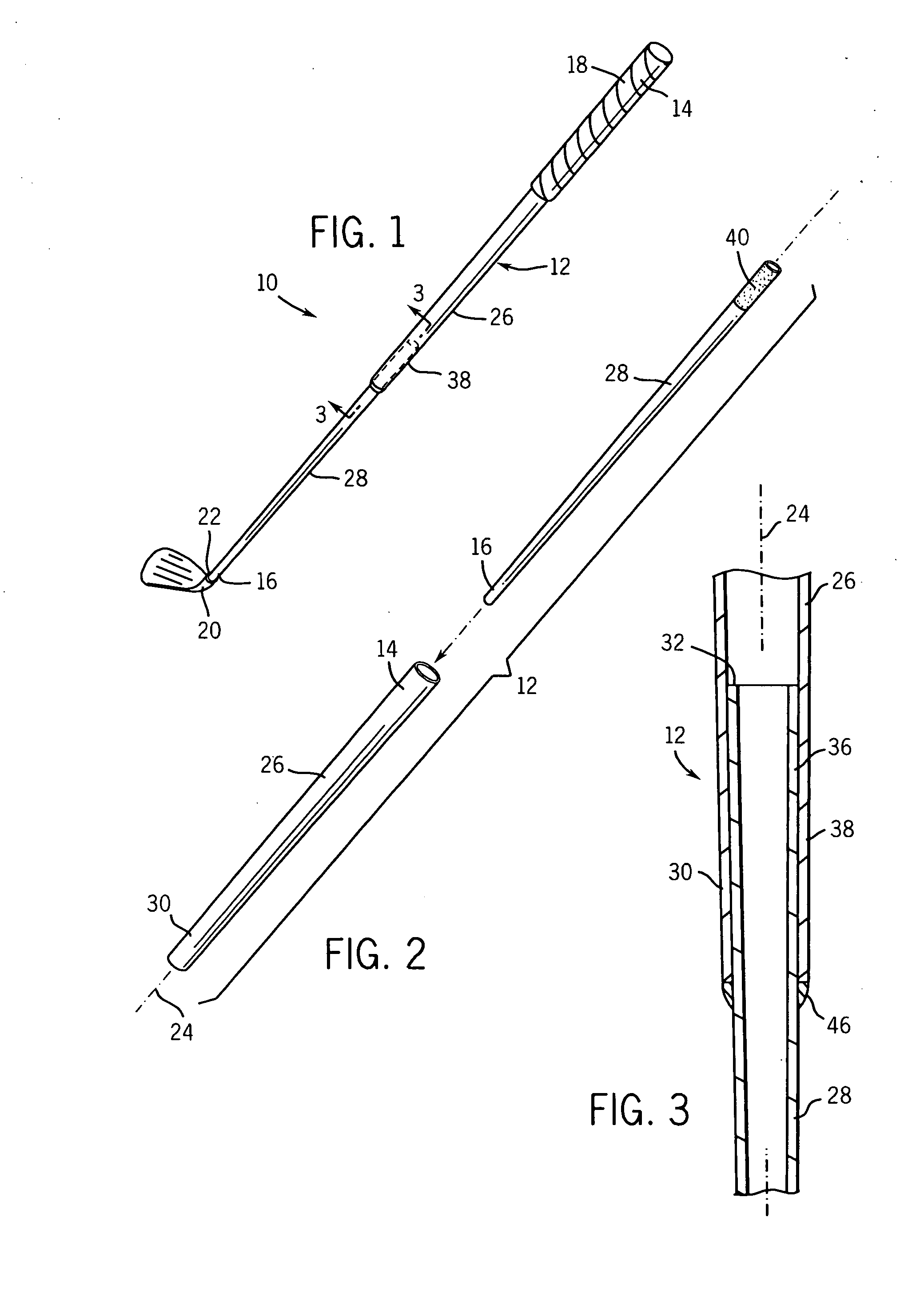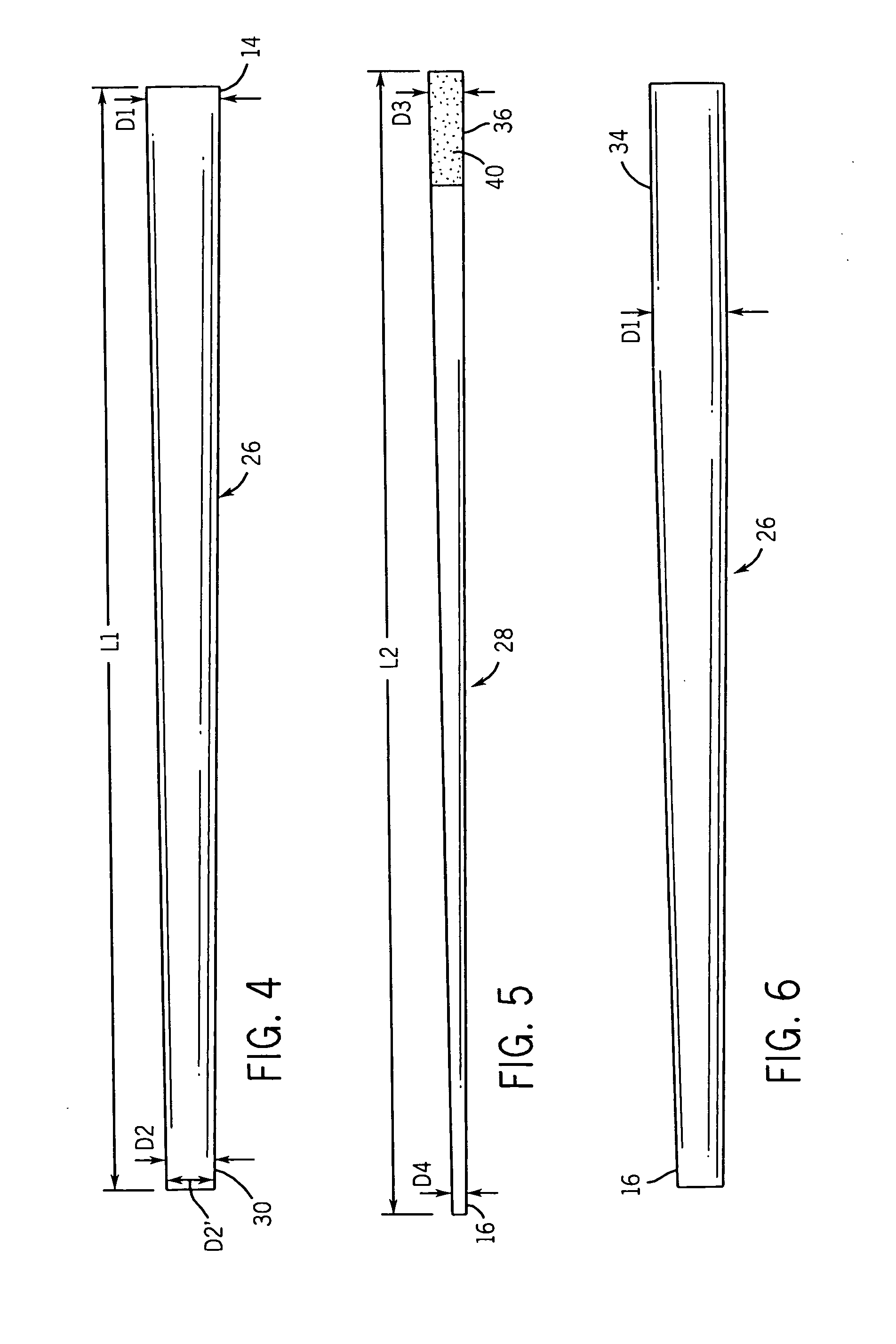Multi-sectional co-cured golf shaft
- Summary
- Abstract
- Description
- Claims
- Application Information
AI Technical Summary
Benefits of technology
Problems solved by technology
Method used
Image
Examples
Embodiment Construction
[0021]Referring to FIG. 1, a golf club is indicated generally at 10. The golf club 10 of FIG. 1 is configured as a #6 iron type club of a set. The present invention can also be formed as, and is directly applicable to, #2 through #9 iron clubs, fairway woods, drivers, hybrids, wedges and combinations thereof in sets of golf clubs. The golf club 10 is an elongate implement configured for striking a golf ball and includes a golf shaft 12 having a butt end 14 and a tip end 16, a grip 18 coupled to the butt end 14, and a club head 20 coupled to the tip end 16.
[0022]The grip 18 is a conventional handle structure of generally hollow construction. The grip 18 has an open end configured for slidably receiving the butt end 14 of the shaft 12. The grip 18 is formed of a generally soft resilient material, such as, for example, rubber, polyurethane, leather, a thermoplastic, an elastomer, or combinations thereof. Alternatively, the grip 18 can be formed of two or more layers of material. In yet...
PUM
 Login to View More
Login to View More Abstract
Description
Claims
Application Information
 Login to View More
Login to View More - R&D
- Intellectual Property
- Life Sciences
- Materials
- Tech Scout
- Unparalleled Data Quality
- Higher Quality Content
- 60% Fewer Hallucinations
Browse by: Latest US Patents, China's latest patents, Technical Efficacy Thesaurus, Application Domain, Technology Topic, Popular Technical Reports.
© 2025 PatSnap. All rights reserved.Legal|Privacy policy|Modern Slavery Act Transparency Statement|Sitemap|About US| Contact US: help@patsnap.com



